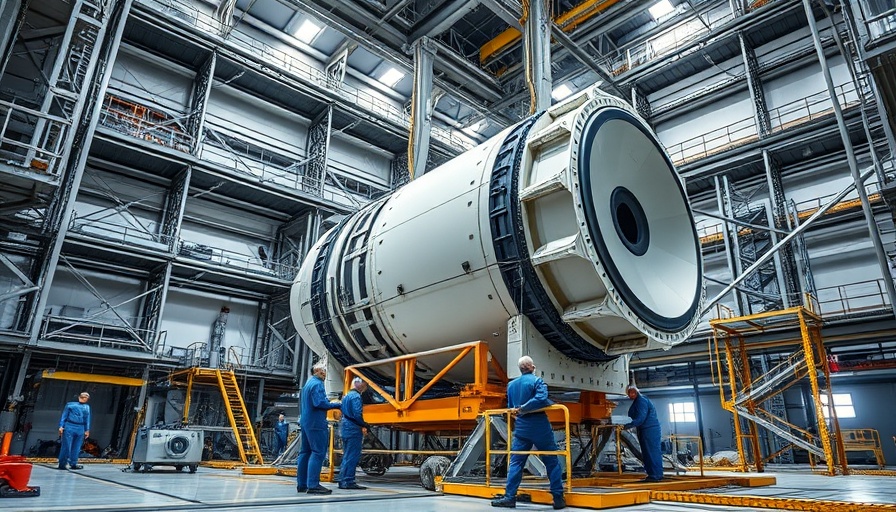
NASA Moves Forward with Artemis 2
NASA's Artemis 2 moon rocket is rapidly taking shape as it inches closer to its 2026 launch. Recently, technicians have stacked the critical Interim Cryogenic Propulsion Stage (ICPS) onto the rocket inside the Vehicle Assembly Building (VAB) at the Kennedy Space Center in Florida. This stage is vital for propelling the Orion spacecraft, carrying a crew of astronauts and facilitating their journey to the Moon.
Aiming for Lunar Exploration and Innovation
The Artemis 2 mission, expected to launch early in 2026, marks the second chapter of NASA's ambitious Artemis program. The crew on board includes NASA astronauts Reid Wiseman, Victor Glover, Christina Koch, and Jeremy Hansen from the Canadian Space Agency. After Artemis 1 successfully completed its uncrewed mission to lunar orbit, Artemis 2 aims to take astronauts on a fly-by around the Moon, setting the stage for future missions.
The Impact of Political Decisions on Space Innovation
Despite the exciting advancements, political factors loom over the Artemis program. The Trump administration's recent budget proposal calls for scraping the Space Launch System (SLS) and Orion programs following Artemis 3. This raises significant questions about the future of NASA’s lunar ambitions and broader plans for human exploration of Mars. Cancelling or reshaping these projects could stifle technological innovation in space exploration.
Challenges and Milestones in Space Exploration
Historically, space missions come with their sets of challenges, and Artemis is no exception. The program faced unforeseen delays due to damage to Orion's heat shield during the atmospheric reentry of Artemis 1. These issues have pushed back the timelines for both Artemis 2 and the anticipated Artemis 3, now set for 2027, which aims to land astronauts on the lunar surface—marking a return since the Apollo missions concluded in the 1970s.
What This Means for the Future of Space Exploration
The Artemis program is not just about reaching the Moon; it's a stepping stone for future Mars expeditions. By establishing a sustained human presence on the lunar surface, NASA intends to conduct experiments, develop technologies, and foster international partnerships that will pave the way for human exploration of Mars. As such, the successful execution of Artemis 2 is crucial not only for NASA but for all of humanity as we aim for interplanetary exploration.
Your Role in Advancing Space Humanities
As space exploration continues to evolve and innovate, there are ways for you to engage and contribute to this exciting journey. From supporting STEM education to advocating for continued investment in space technologies, every little effort counts towards ensuring we seize the potential that lies beyond our planet. Keep an eye on the upcoming missions, as they may well define the trajectory of human innovation in the next century.
 Add Row
Add Row  Add
Add 




Write A Comment